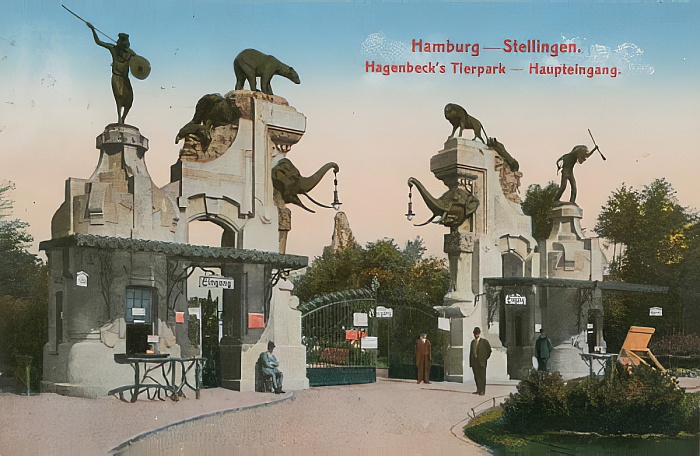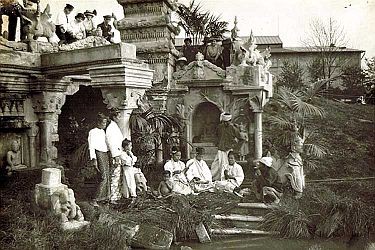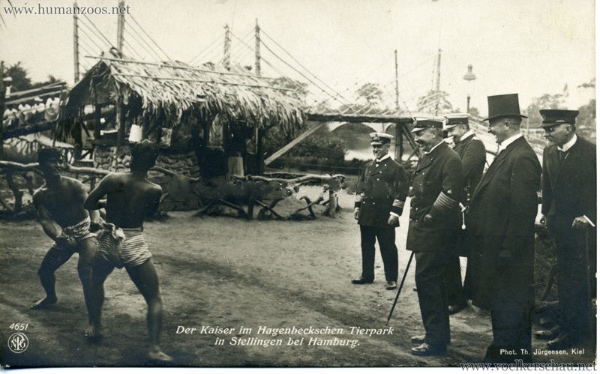

The entrance to Hagenbeck Zoo in the 1910s

Burmese exhibit

Kaiser Wilhelm II of Germany viewing a Burmese performance at the Zoo.
1910
Burmese at German Zoo
room Germany
In 1913 around fifty Burmese men and women, including a Buddhist monk, were exhibited at the Hagenbeck Zoo near Berlin.
The 1910s were a time when many humans were exhibited in zoos around Europe. Carl Hagenbeck was a pioneer in this field. After exhibiting exotic animals with his father for many years, he founded the Hagenbeck Zoo in 1907. It was the first zoo were animals not caged and instead were shown in a "natural" surrounding, with deep ditches to separate them from visitors. It was a huge success, and Hagenbeck soon included humans as well. These were people from societies also deemed exotic, especially from Africa, but also from Asia and elsewhere.
These human exhibitions are today widely seen as degrading. People who performed in the exhibitions and who were interviewed many years later have described the humiliation of being watched alongside animals, with visitors sometimes touching them and smelling them. These exhibitions sometimes included children whom visitors would try to feed. Those involved complained of extremely poor living conditions with many dying after several months from disease.
Indeed, these exhibitions were part of the development of modern racism in Europe - the ways in which peoples around the world were studied, categorised, and ranked, according to what were seen as "scientific" methods. Racism in the era of European imperialism and genocide was grounded in the idea that humans were biologically different. Exhibiting people in zoos feed into the idea that these different and inferior kinds of humans were objects of study and amusement, not really other humans "like us".
A modern-day press pack for the Hagenbeck Zoo describes the structural remnants of the exhibition which still exist today, known as Birma-Teich, or the Burma Pond: "The 1913 ethnological exposition from Burma was the first for which stone buildings were erected. The existing terrace at lake of Birma was extended by the addition of statues of Burmese gods, goddesses and mythological creatures, as well as a wooden temple. Today, the remains of the statues around the patio of Birma are the only traces that remain of the ethnological expositions at Hagenbeck's zoo."
Nothing is known about who the Burmese exhibited at Hagenbeck Zoo were and whether all eventually returned home.